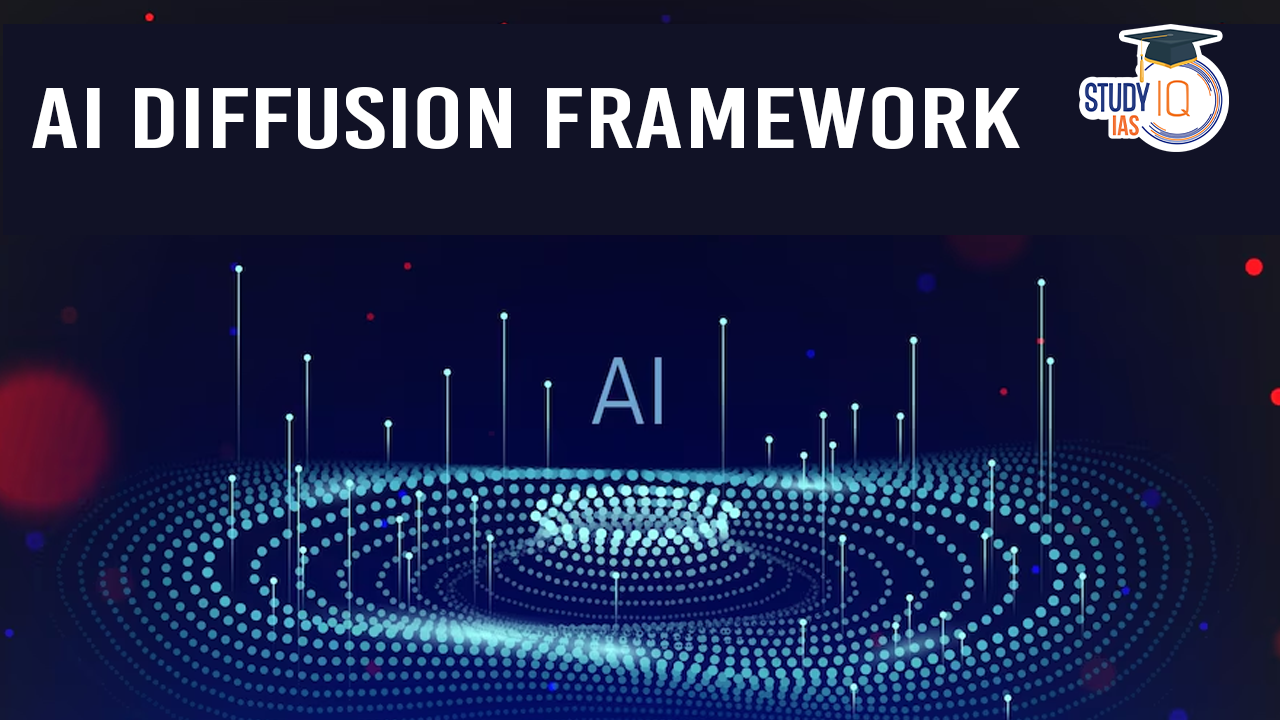Table of Contents
The US. AI Diffusion Framework was introduced by the Biden-Harris administration in its final week in office as a comprehensive policy initiative. The framework is designed to regulate the global spread of artificial intelligence (AI) technologies and safeguard U.S. dominance in the AI sector.
Objectives of the AI Diffusion Framework
- Maintain U.S. AI Leadership: Ensure continued dominance in AI technology development and its global supply chain.
- Restrict Access to Adversaries: Limit access to advanced AI capabilities for nations considered adversaries to U.S. interests, including China, Russia, North Korea, and Iran.
- Control AI Innovation Spread: Regulate the export of critical AI technologies like AI chips, chip-making tools, and AI model weights.
- Future Breakthroughs: Ensure that any future AI breakthroughs occur within the U.S. or among its trusted allies.
Country Classification System: Three Tiers of Access
The framework divides countries into three tiers based on their level of access to U.S. AI technologies:
Tier 1: Key U.S. Allies
- Countries: U.K., Japan, Australia, Canada, and other trusted allies.
- Access Level: Full access to AI technologies without restrictions.
- Rationale: These nations are considered close partners, with a shared interest in global stability, democracy, and technological progress.
Tier 2: Strategic Partners & the Rest of the World
- Countries: Includes nations like India, Israel, and other strategic partners.
- Access Level: Limited access, with restrictions on computing capacity and certain AI models.
- Rationale: These countries are important for global alliances but are subject to limitations to prevent the transfer of sensitive AI capabilities to adversaries.
Tier 3: U.S. Adversaries
- Countries: China, Russia, North Korea, and Iran.
- Access Level: No access to advanced AI technologies. The strictest export controls apply, including bans on the export of AI chips, model weights, and related technologies.
- Rationale: These nations are considered a security threat and efforts to prevent the spread of sensitive technologies are prioritized.
Implications of the Framework
- Global Technology Race: The framework reflects the geopolitical competition in AI technology, emphasizing the need for the U.S. to stay ahead of strategic rivals.
- Economic Impact: Countries in Tier 1 gain an economic advantage by having unrestricted access to cutting-edge AI technologies, while countries in Tier 2 face limitations that may impact their technological development.
- AI Supply Chain Control: By regulating AI chips and AI model weights, the U.S. aims to control the global supply chain of critical AI technologies, potentially disrupting China’s and Russia’s AI ambitions.
Conclusion
The US. AI Diffusion Framework is a strategic move by the U.S. to assert its dominance in the global AI race while limiting access to adversaries. This policy marks a new chapter in the regulation of emerging technologies, where the balance of power in AI and its global diffusion will significantly shape international relations in the coming decades.


 AI and its Regulation in India, Limitati...
AI and its Regulation in India, Limitati...
 Tuberculosis (TB), Symptoms, Causes and ...
Tuberculosis (TB), Symptoms, Causes and ...
 Silicon Photonics Enables Low-power AI A...
Silicon Photonics Enables Low-power AI A...





















